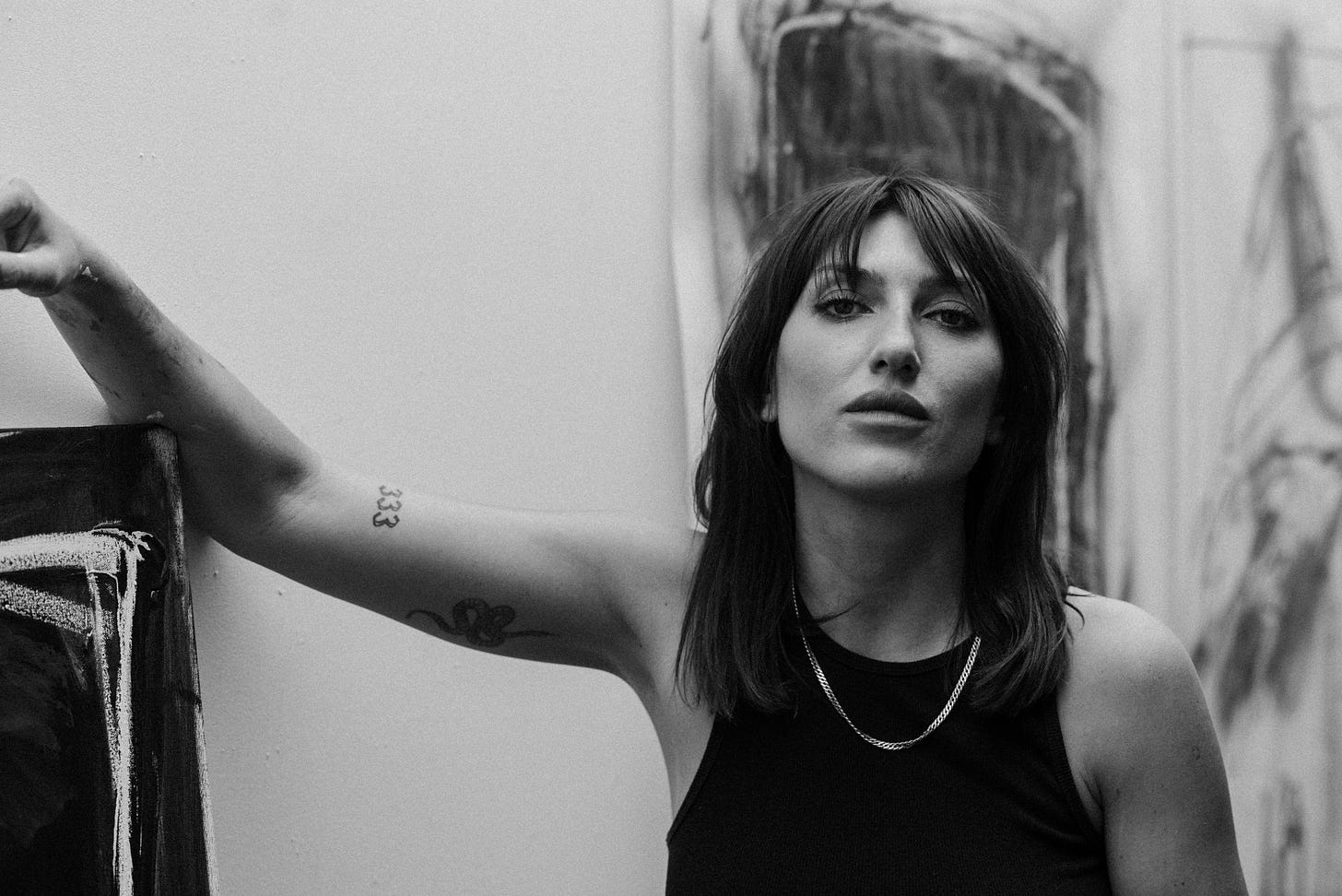Rediscovering Creativity: A Collaborative Journey with photographer, Nick Spector and artist, Dina Roudman
Our Pastiche Journals series exists to give our community a channel to voice their creative process while sharing a personal account of their creative journey.
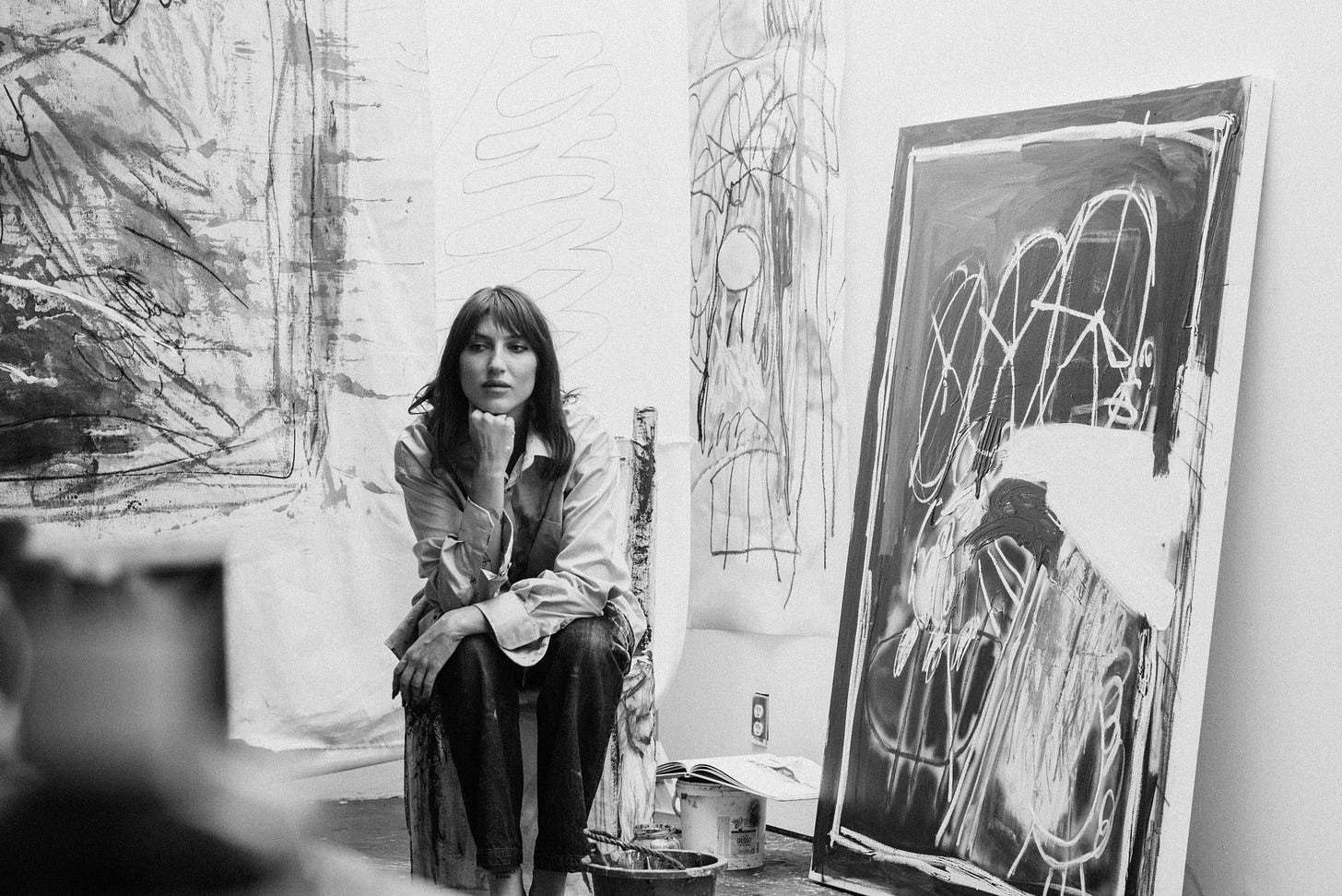
Pastiche Journals are written by visual artists from our community about their work and creative process. In this entry, Nick Spector1, a Toronto-based photographer, talks about his collaborative relationship with artist Dina Roudman, and how it impacted his creative work.
As the world entered the pandemic in 2020, I was already feeling burnt out creatively. I reached one of those “why am I doing this?” moments. Photography – specifically fashion – felt like it had become more work than something creatively rewarding. I think those Covid years were an opportunity for everyone to reevaluate what was important to them.
For me, it meant taking a major step back from photography. I didn’t feel like what I was doing was true to me anymore. Not only the fashion side, but all of it. I just didn’t have anything to say, photographically. Aside from a few freelance gigs here and there, I pretty much stopped taking photos in any intentional or meaningful way from 2020 to 2024. Since then I’ve been focused on doing things to improve my mental health. I think it has helped get me to a place where I wanted to pick the camera up again.
I’m much more conscious of my relationship to the creative practice now and the importance of maintaining the health and positivity of that relationship.
As I started getting more active with my photography and sharing work again, Dina Roudman2 — a friend and model I’d worked with years prior — reached out and said we should do another shoot together. We have known each other and collaborated on multiple shoots over the past eight years. Our collaborations began when Dina was pursuing a career as a fashion model and I was just starting to build a portfolio of fashion/editorial work. Over the past few years I’d watched her succeed as a painter and visual artist, and was interested in her studio space and her process. After a few back-and-forth discussions about it, we decided to do a hybrid shoot.
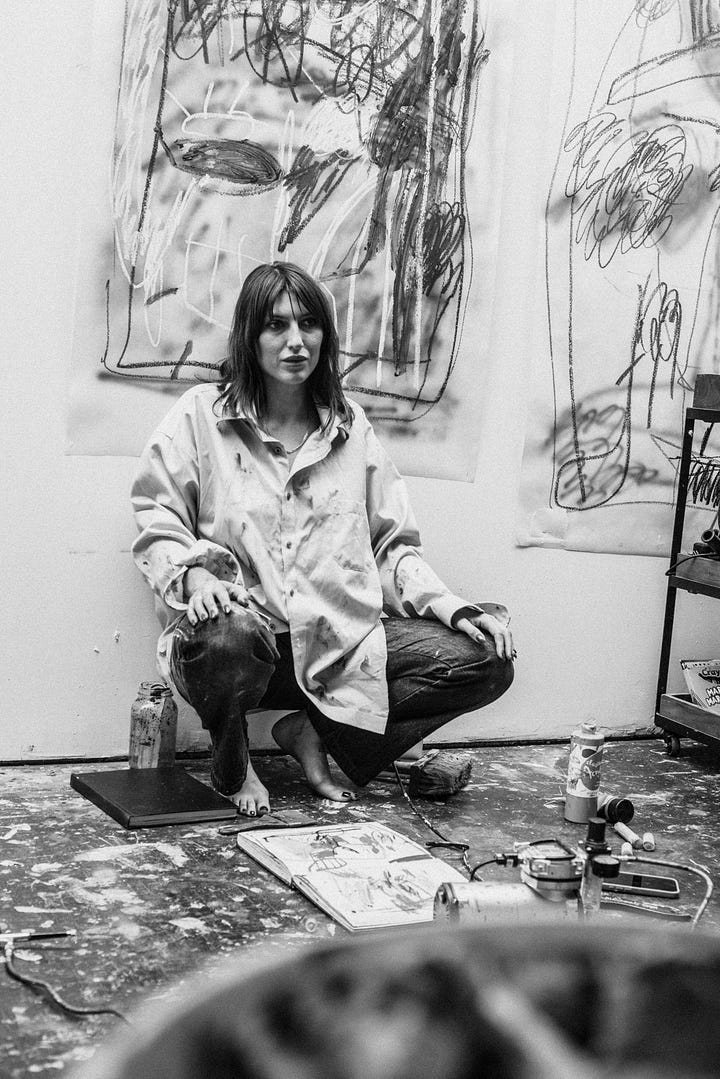

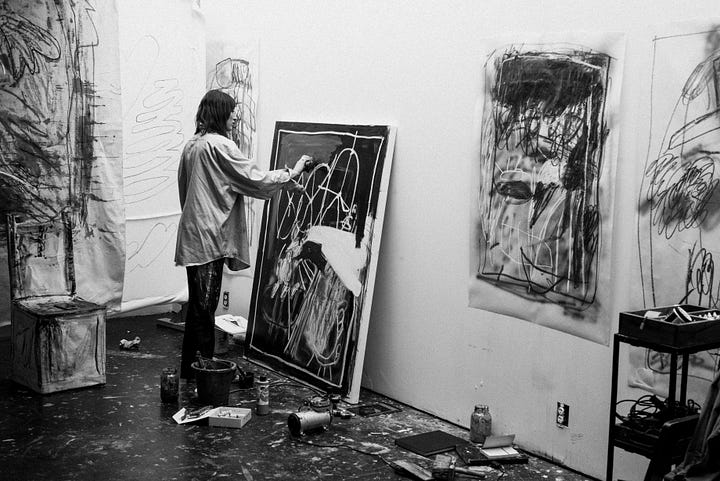
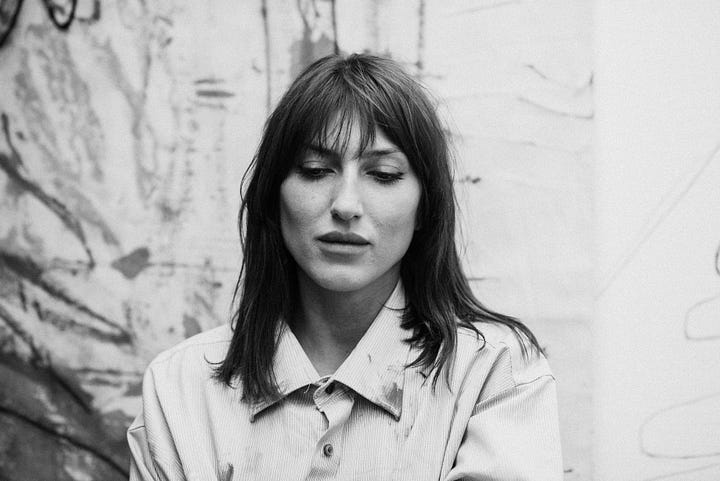
– This project has two distinct "parts" to it, woven together through a consistent aesthetic language. It speaks to our collaborative history and to where we are now as artists. –
The first part is a traditional documentary-style look into an artist in her studio space creating work. I wanted these images to capture the energy, movement, spontaneity, and thoughtfulness that goes into the paintings Dina creates.
The second part has elements more consistent with editorial/fashion photography. While I may introduce creative or "manufactured" elements to the shoot (here, the painted plexiglass was introduced to create a certain set of actions), ultimately, I cede control to the moment. How and what Dina painted was entirely up to her. While the vision was to create images of Dina shot through the plexiglass with the painted graphic elements as foreground compositional tools, there are also images where stepping outside of the bounds of that frame made for a more dynamic, expressive image.
My process has always been collaborative in nature. I work with a lot of people relatively new to modelling. I’m not interested in particular poses or facial expressions from them, it’s about conveying honest emotion and energy. I tell almost everyone I work with, I’m not looking for anything but you. I have certain word prompts that I’ll give a person, ideally a few days before the shoot so that they can hold those words in their mind. Other than that, I’m open to whoever they are when they arrive at my studio. When we shoot, we usually run through the typical test shoot-style poses. Through that process, I notice the more nuanced aspects of personality coming through in brief moments. I’ve always let that guide me.
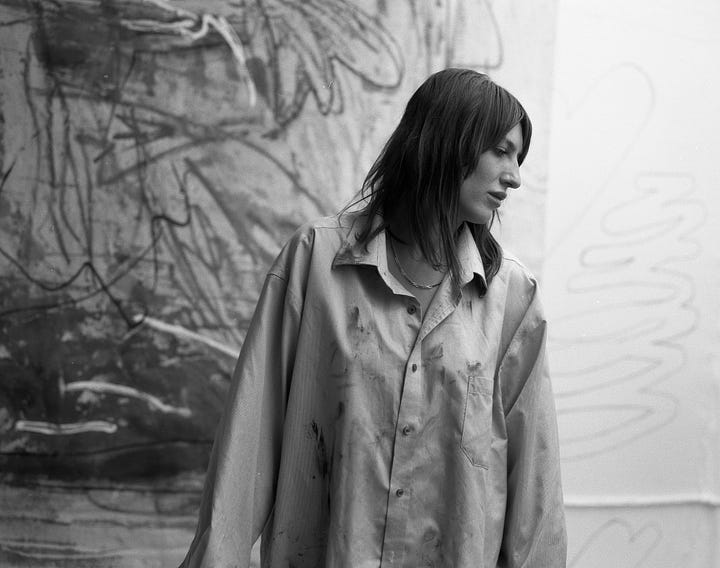
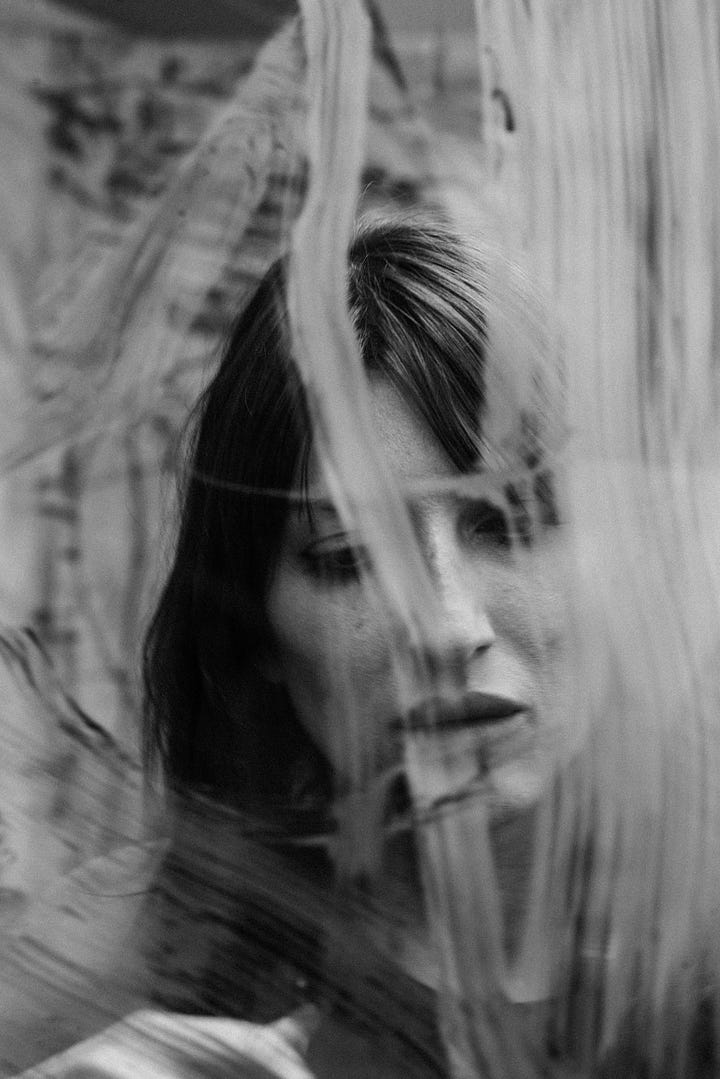
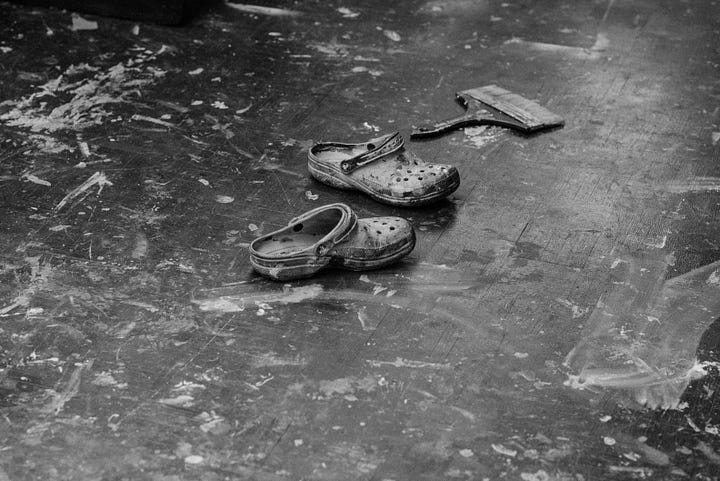
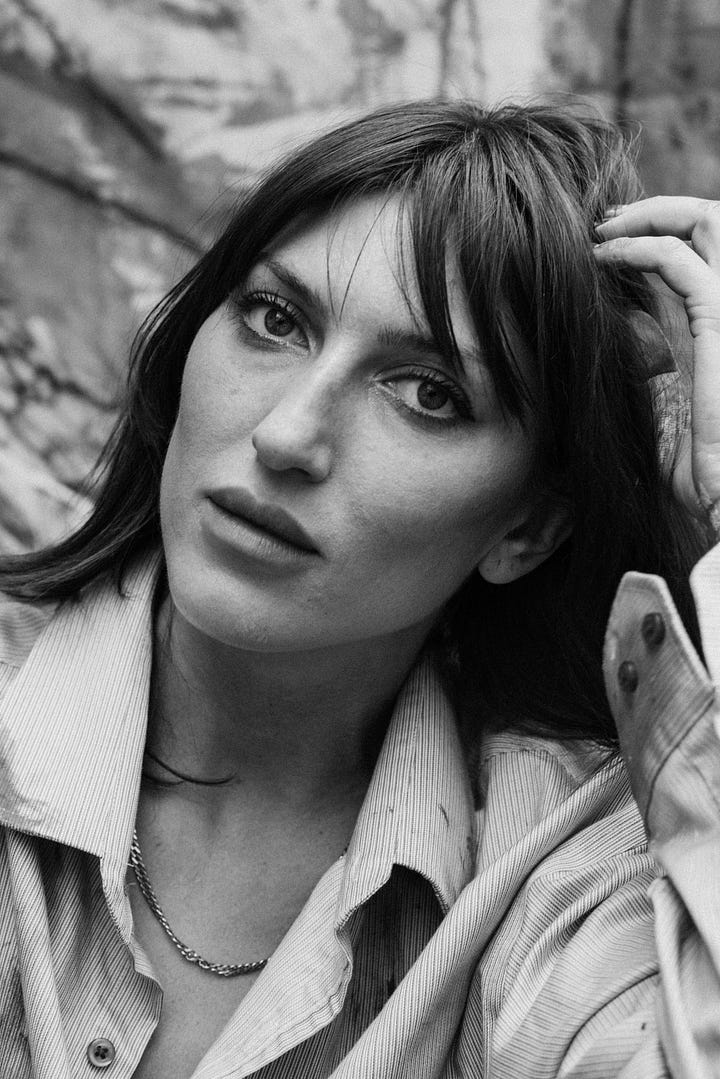
Dina has always been great to work with because she gives so much of herself to whatever the project is. She has an incredible range of moods and energies that she can convey, and as different as they are, they all feel like an honest part of who she is.
Before this project I assumed that painting was a medium with a lot of structure and formality — that the artist goes into it with a clearly defined plan, knowing the “what” of the painting beforehand; a landscape, a still life, a portrait, etc. Dina’s way of painting is much less scripted, much more free-flowing. Over the course of the day that I was at the studio, she used a brush, an airbrush and rubber gloves to paint her canvases. There’s a trust she has in her own instinct and impulse to do something on the canvas.
This project taught me a lot about embracing imperfection and about trusting my own instinct. About trusting the moment.
As I reflect, the experience definitely influenced my approach to street photography and I’ve been challenging myself a lot more to trust that instinct to take a photo. There’s so much that the eye sees that the brain isn’t consciously registering.
When I review my work, I have a tendency to get stuck in the loop of thinking about what I could have done differently to make the images better. On the drive home after the shoot, I was already thinking about how I could have used strobes, I could have used reflectors, I could have used a different focal length. These are all thoughts that happen in anticipation of an external criticism. And yes, I could have done all of those things, but that wasn’t what the moment demanded.
Studio lighting can be intrusive and cumbersome, especially in a small space with an artist trying to create. It might have made for more technically “perfect” photos, but it would have imposed an artificiality into the space and the moment. It wouldn’t have been Dina’s studio anymore, it would have been a set limited by where I could create the best light in the most space.
There was a point where I was sitting on the floor taking photos while Dina was painting, and I remember looking around and just feeling a lot of gratitude to be in that space. I’m really proud of the photos we made together, and I’m honestly just really happy with where I am in my relationship with this craft. It feels so much lighter and healthier than it did pre-pandemic. I’m not worried about monetization or how I can parlay my work into professional opportunities. I just want my efforts to do the work justice. I want it to live on somewhere beyond a fleeting Instagram post; whether that’s in a publication like Pastiche Magazine, or a personal project of my own.
That’s what really matters to me.
Nick Spector is a Toronto-based film and digital photographer, and has been practicing photography for over 15 years. His creative work ranges from street photography, documentary photography, fashion and editorial from his travels.
Dina Roudman is an antidisciplinary artist, actor, and storyteller who thrives at the intersection of chaos and curiosity. Born in Russia, raised across cultures in Kazakhstan, Israel, and Canada, she brings a kaleidoscopic perspective to her work, blending nostalgia, bold intuition, and a touch of the surreal.


